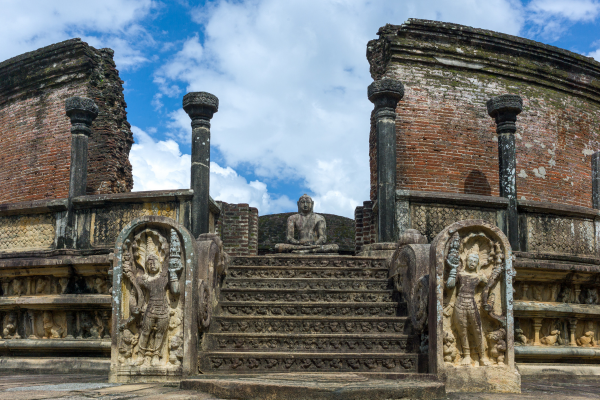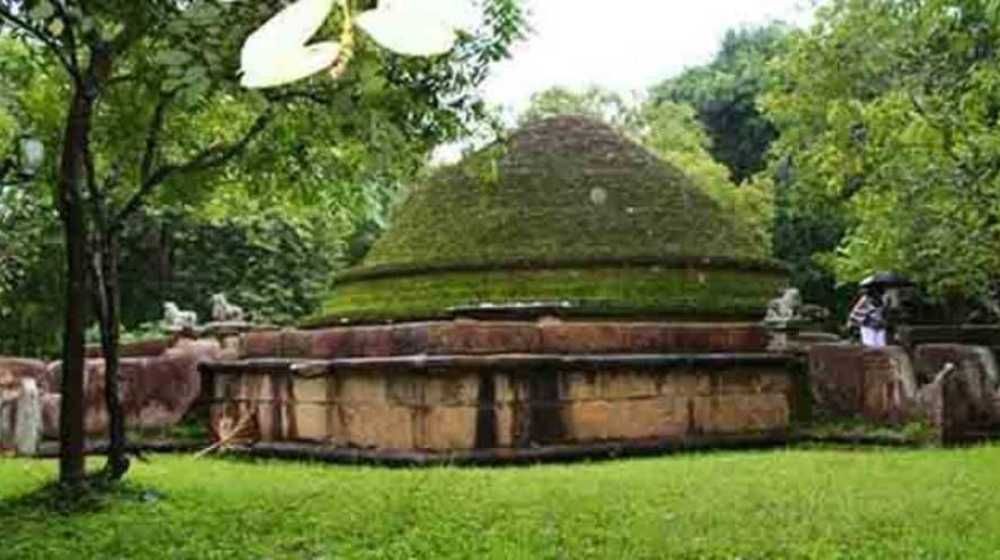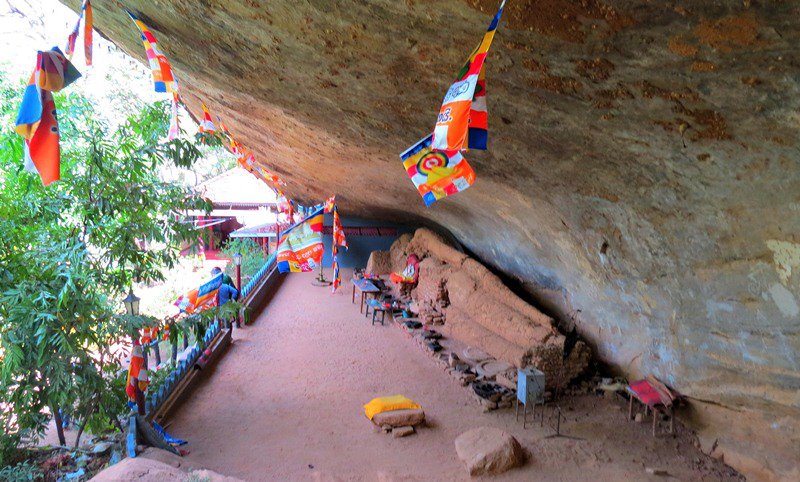AN ODYSSEY – THE SEARCH FOR HERITAGE (Part 2) – by Bernard VanCuylenburg


PROLOGUE.
Saying “Goodbye” is never easy. The “Goodbyes” I bid to the Staff at Nilaveli Beach Hotel after a relaxed idyllic holiday following the first leg of my tour was hard. This was where I cut my teeth on life’s road and the ties that bind me to this Hotel were, and remain very strong. But there was a long road ahead, a road I never travelled before. Travice Ondaatjie, whose late Dad Mr.George Ondaatjie was my Boss when I worked for Nilaveli Beach Hotels Limited drove up to Nilaveli on Friday the 24th and told me that on Sunday the 26th March we would leave for Passekudah, Arugam Bay and travel down the Eastern seaboard right down to the Lahuggala National Park in Amparai to visit the archaeological sites there, and then head for Wellawaya and finally to Colombo. It was his magnanimity which made this leg of the tour possible and to him I owe a debt of gratitude. Leaving Trincomalee, Mother Nature was at her majestic best and vistas of wonder opened up before us. On one side was a turquoise emerald blue ocean, her foamy waves breaking on sun kissed shores and on the other, lush tropical jungle in varying shades of green and acres of desolate wilderness, the ubiquitous paddy fields, and birds of colourful plumage on the wing. Nature had run riot with her paintbrush and overcome by the breathtaking landscape, the doors of an extraordinary new Garden of Eden opened up for me in a rocket burst of colour ! Nature nurtures, heals, and enriches one’s spirit – my cup was overflowing. Having reached Arugam Bay we spent some time visiting the town and the lovely Bay area and spent the night in a Boutique Hotel.The next morning we headed for Amparai and the Lahuggala National Park.
THE JEWELS IN THE CROWN.
The Lahuggala Kitulana National Park which is one of the smallest in the country is very important for the endemic birds of the island and the Sri Lankan elephant. But as I was soon to discover to my delight, it was an archaeological and cultural treasure trove. It was an “Ali Baba’s” cave of treasure if I may use a metaphor from ”A thousand and one Nights”, and something of an Aladdin’s Lamp which promised archaeological treasure in bountiful measure.
THE MAGUL MAHA VIHARA – THE ROMANTIC RUIN.
Two starry eyed lovers took their sacred marriage vows here long long ago in a temple, the name of which translates as ”A Wedding Temple” in the halcyon days of the islands rich history. They were Princess Vihara Maha Devi, the daughter of King Kelani Tissa of Maya Rata, and King Kavantissa (205 – 161 BC.) who ruled the Mahagam Ruhuna Kingdom. When they first met under rather unpleasant circumstances, ‘ Anangaya ‘ the God of Love better known to us as Cupid was present, and his arrows found their mark. But how King Kavantissa met the love of his life is a story which has its genesis under very sad circumstances.
STOLEN LOVE.
The King of Kalyanapura was a very distressed and angry man when he discovered that his Queen was unfaithful and carrying on a dalliance with a young Nobleman in the royal court. Worse, a letter written to her by her lover had unwittingly fallen into his hands and his fury knew no bounds when on reading the Ola leaf manuscript he concluded that it was sent by a monk whose writing he recognized. At least that is what he thought because nobody in the court dared convince him of anything contrary, not willing to risk his wrath. If hell hath no fury like a woman scorned, then the hell of a King scorned was a catastrophe ! The innocent monk who was not given a chance to clear his name was sentenced to death by being drowned in a cauldron of boiling oil, and the next day suffered an excruciating death when the sentence was executed. To his credit, he met his doom stating his innocence adding that if this was his fate he would gladly pay the sacrifice. The Queen horrified and full of remorse confessed her guilt, and named her lover but it was too late. The King now completely a broken man banished them both, but he could not bring the innocent monk back to life. The next day thunderous showers of rain poured down for a week which devastated the land causing death and destruction in its wake and a horrendous loss of life. When summoned to the court, the wisemen told the King that the Gods were angry at his foul deed adding that the floods would not abate until he the King made amends for his action. When he asked them how he could do this, they told him that he should sacrifice somebody who was near and dear to him. The King was aghast . Crying out in despair he pleaded that they spare him his only child. They replied that the Gods were angry and in his fury he did not spare the life of an innocent man.
SUDDHA DEVI THE VIRGIN PRINCESS.
The seventeen year old daughter of the King Princess Suddha Devi, was a girl well versed in the ancient books of the country and learned beyond her years. When the wise men left she boldly told her father that she would gladly sacrifice her life for the safety of the country and her people, adding that one life was nothing compared to the death of thousands of her countrymen. This is only a brief description of the events which followed. I recommend the book HEIRS TO HISTORY by Loranee Senaratne which has one entire chapter dedicated to the events I have described. The facts quoted have been summarised from her priceless book which has a wealth of detail to give these events full context. Prince Suddha Devi was placed in a boat and set adrift and as she drifted far out into the wide ocean, the rains ceased and the floods subsided. Having drifted for three days the boat finally drifted to the South Coast of the island – to the Kingdom of Ruhuna ruled by King Kavan Tissa. On information that a boat had washed ashore with a young maiden aboard near death, the King made straight for the spot. When he saw Prince Suddha Devi, he instantly recognized her as the daughter of King Kelani Tissa the ruler of Kalyanapura. She was rushed to the palace, given medical attention and clothed in fine garments befitting a Prince. In time King Kavantissa made her his wife amidst great rejoicing. Marking the spot where the sea gave him his greatest treasure, he named her Vihara Maha Devi. And to give this story a happier ending, he sent a message to the King of Kalyanapura informing him that his daughter was safe. I recommend the Chapter VIHARA MAHA DEVI (155 BC) in the book by Loranee Senaratna for a full dramatic description of this love story.
The beautiful wedding podium (Magul Poruwa) is only one of many interesting ruins which grace this site. There is an air of hallowed silence pervading this area which enhances its spirituality. One has to immerse oneself in the aura and psyche of this spot to reap the benefits it offers to one’s spirit. I felt blessed just to be here. A walk around the ruins in the beautiful garden layout will give you an idea of the splendour of this site in its heyday. Even in ruins, the Magul Maha Vihara recalls the magnificience of centuries past because what remains is a trove of architectural wonder in this jewel by the ocean – a place of historical interest where love blossomed and two lovers were united as man and wife. Down the ages the Vihara fell into ruins and was swallowed up by the encroaching jungle. But mystic powers sometimes intervene in the affairs of men, and by a happy coincidence the Magul Maha Vihara was discovered over a thousand years later and resurrected to her former glory by another Queen of the same name – Queen Vihara Maha Devi, the wife of King Buvanekabahu the fourth of Gampola – who ruled from 1341 – 1354. She renovated the temple which blossomed into a new phase of its existence. I will always think of it as “The Romantic Ruin.”
THE MUHUDU MAHA VIHARA.
I stood on the shore and enjoyed the panoramic kaleidoscope of Arugam Bay before me. The wide sweep of the bay, her waters rippling in the sun as the foam flecked waves washed upon the shore moving to the rhythm of a music that is played eternally, was an image straight out of an artists canvas. On the shore were boats of every size shape and colour which enhanced the scene. I watched entranced. This was Arugam Bay beloved of those who loved surfing. But in the distance I perceived a glint of something shimmering in the sun. On making inquiries I was told that this was the historic Muhudu Maha Vihara. I was filled with eager anticipation as this monument was on my list of sites I would visit.
Set in a fairy tale setting by the rolling blue ocean, the Muhudu Maha Vihara was built by King Kavan Tissa of Ruhuna. The Muhudu Maha Vihara is located in the vicinity of Pottuvil and the ruins in her precincts are only a gentle hint of her past glory and splendor. A few relics still remain. There are stone statues of the Buddha and two statues which Archaeologists state are those of two Kings while another school of thought say these are of Gods. This 2000 year old jewel is better known and most famous because it marks the exact spot where Princess Suddha Devi the daughter of King Kelani Tissa landed in the boat which set her adrift in her supreme act of self sacrifice. King Kavan Tissa later became her husband and he named her Vihara Maha Devi, Certain archaeological sites are imbubed with an air of mystery, and the Muhudu Maha Vihara falls into this category. It is only one of many archaeological sites in the long and glorious lineage of ancient Lanka’s history which have an air of enchantment. It evoked an irresistible sense of wonder in me, but I like to think of it as a place where love flourished, reigned supreme, and today is still steeped in history.
THE NEELAGIRI MAHA SEYA – A TALE OF TWO KINGS.
The colossal Neelagiri Maha Seya, the largest Stupa in the Lahuggala National Park which has a
circumference of 600 ft. and a height of 72 ft. is credited to have been built by two Kings – King Kavantissa (3rd century BC) and King Bhatikabaya (30 BC – 9 AD). When I arrived at this site, large scale restoration work was in progress and the whole area was a hive of activity. I was privileged and inspired to watch the workmen as they discharged their duties with dedication which only comes from the heart. For history’s sake I must mention that in ancient times it was known as the “Uttala Seevali Pabbata” and there is a record of renovation work carried out in the 7th century AD. Renovation work which was carried out in 2011 turned up an important discovery, a pillar inscription mentioning a donation by Princess Chula Sivalee, the daughter of King Bhatikkabaya. The latter was also the regional King in Ruhuna when King Kuttakana Tissa ruled Lanka from 42 – 20 BC). Historians confirm that Princess Chula Sivalee also ruled for a short period in the year 34 AD. There is another inscription which records that King Jetta Tissa who ruled the country from 266 – 276 AD made donations to the monastery. A golden casket was unearthed among other items which came to light. Spend time here, immerse yourself in the history of this gem and you will find many artifacts of this ancient temple complex which stood here thousands of years ago. This not an archaeological site which can be enjoyed by snaps of photography alone. One has to take time to immerse oneself in the rich history of the ruins and absorb its sanctity. Only then will one reap the benefits of the spiritual dimensions of this precious gem, as it seeps into your soul and spirit.
THE HULANNUGE THARULENGALA RAJA MAHA VIHARA.
Believed to have been built during the reign of King Kavantissa as inscriptions found here confirm, this beautiful temple lays two claims to fame apart from her historical importance. First, it has one of the oldest statues of Lord Buddha made of clay, and second, the Hullanuge cave is considered to be the longest cave in Asia. Today this forest hermitage covers an area over 25 acres in extant and the thick jungle hides many secrets which time has not revealed. The archaeologist’s spade will unearth many buried artifacts and who knows, maybe other treasure such as coins and mosaics. An ancient Buddhist monastery which traces its origins to the 3rd century BC is the Kudumbigala monastery and its Chief Priest administers the area. In a cave measuring 175 feet in length there is a stunning imposing statue of Lord Buddha made out of clay which is the second largest reclining statue in the country. It saddened me deeply to see that treasure hunters have done their dirty work and this beautiful statue has not escaped the avarice at the hands of vandals. In the early sixties when the world famous Sigiriya frescoes were defaced and damaged by vandals, I remember the then Minister of Education Mr.I.M.R.A.Iriyagolla echoing the collective shock of the nation made a speech in Parliament in which he said “The vandalism committed on this National treasure is tantamount to stabbing one’s Mother in the heart……” What words could one use to describe the vandals who would damage the beautiful statue of the reclining Buddha in this horrendous manner….? Ravaged by time, the plaster in this cave has peeled off in certain sections revealing priceless drawings of animals, and hunting scenes which were executed by the Veddahs who inhabited the jungle. There is a huge Nuga tree on a rocky hill from which the temple derives its name HULANG (Wind) and NUGA the name of the tree) thus “Hulangnugga”. When the wind blows it makes a peculiar sound and that was the genesis of the name given to the temple. There is much to see here and a lot of walking involved. A deep love of History and lots of time are essential to get the benefits of a visit to this special place. I left with a very dark cloud on my horizon, having “witnessed” first hand an example of a cultural treasure looted by vandals. Sadly looting and desecration of ancient archaeological sites is not unique to Sri Lanka. Egypt, Mexico, Cambodia, Peru, and Guatamala, are just a few countries where this is endemic, some to a lesser degree. A country loses her soul when this goes on unchecked.
THE GALABEDDA ANCIENT POND – THE MONERAGALA MARVEL.
The direction board pointing to this classical archaeological site off the main road is barely visible and does not do it much justice. It simply says ” The Galabedda Ancient Pond – Archaeological Site”. In fact it could be easily missed. What a treasure awaits the visitor ! Incidentally, it is also referred to as “”Kellane – Valle” when translated means ‘The Girl’s Biso Pokuna’. The Galabedda ancient pond which in reality is a swimming pool, is all that remains of an ancient palace. At first sight it reminded me of the more famous “Kuttam Pokuna” in Anuradhapura which is an architectural and hydrological masterpiece. The Pool at Galabedda comes a very close second. Turn back the pages of historical time a thousand years when the Southern part of Ruhuna was divided into two sections along the Walawe Ganga. The “Atthsahasa Rata”meaning the province of 8000 villages was located East of the river and its administrative Centre Udundora was the residence of Queen Sugala. KIng Parakramabahu the Great who ruled from 1153 – 1186 attacked Udundora to reclaim the sacred Tooth Relic.
This pool is located in what must have been a magnificient garden and still retains a memory of its past grandeur. The entire complex lies at the foot of a mountain range covered in lush green forest from which a waterfall flows, and provided water for the pool, the palace, the gardens, and for any settlements in the vicinity. The water flows to this day but the pool remains dry for obvious reasons. The water was chanelled to the floor of the pool by four dragon mouths, and stone conduits ensured the entrance and exit of water. There are some pillars close to the pool which
were probably the changing rooms for those using the pool. I never thought that a Toilet would attract much attention and be of special interest, but the toilet just next to the pool is extra special. It is the squatting toilet which discharged the sewage from the toilet bowl by pipes underground, to an outlet which flowed away to a spot where it was discharged. This is another classic example of
how those ancient architects and builders experts in the art of Hydrology, mastered the art of using and conserving water. Pardon me if I digress, but the ancient chronicles in Nepal – I think it is called the “Rajatharangani”, has a record of the King of Nepal in the 8th century having requested the King of Lanka at the time for Engineers from Sri Lanka to build a dam in his country. I boldly and proudly say that little Lanka was then a first world country on the world stage, and the proof is there for all to see. Apart from the swimming pool and the pillars, all that remains is a moat and a rampart – and a lingering memory of her past glory.
EPILOGUE.
The ancient temples, monuments, giant tanks, irrigation schemes and cultural treasures still retain their power to remind visitors of the Kings and technological experts who built them. It is a masterpiece of creative human genius. Their achievements are impressive examples of the ingenuity and determination of humankind. I was asked many times which site I visited impressed
me the most – a very difficult question because each monument tells a different story and has its own allure. But, from the wondrous sites I had seen, I would select the Rasvehera temple with the
Sassaruwa Buddha as the object that affected me the most and enveloped me its warm embrace .
I wrote about it in Part 1 of this article. While the Avukana Buddha is the more famous statue just eleven kilometers away in the Avukana temple which gets the most visitors and all the glory, the Sassaruwa statue is still stupendous and beautiful in its incomplete state. To walk around it and gaze at it from any angle and muse upon its broken height, is to lapse into a sad though not unpleasing meditation. But after a thousand years, all is not desolation. As I gazed at this beautiful unfinished abandoned masterpiece, the warbling of the birds made the quiet sanctity of the place quite melodious. And in the hushed silence standing close to the statue, I could hear the chanting of monks from a distant and different time which soothed my startled ear.
Almost two centuries before Christopher Columbus, a young Moroccan named Ibn Battuta set off for distant lands and returned to his homeland after three decades, as one of history’s great travellers, driven by curiosity and sustained by the Koran. He visited Ceylon in 1344 during the reign of King Buvanekabahu the 3rd, and has left an unbiased record of life in the island at the time.
Life after all is a journey of discovery. Why not take the high road?
Bernard VanCuylenburg.












